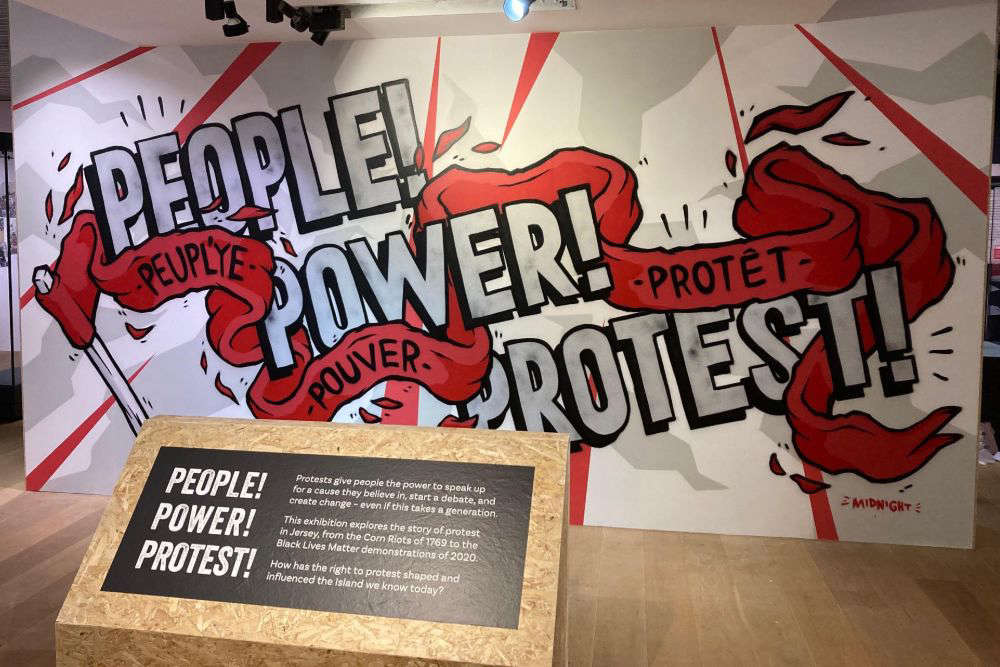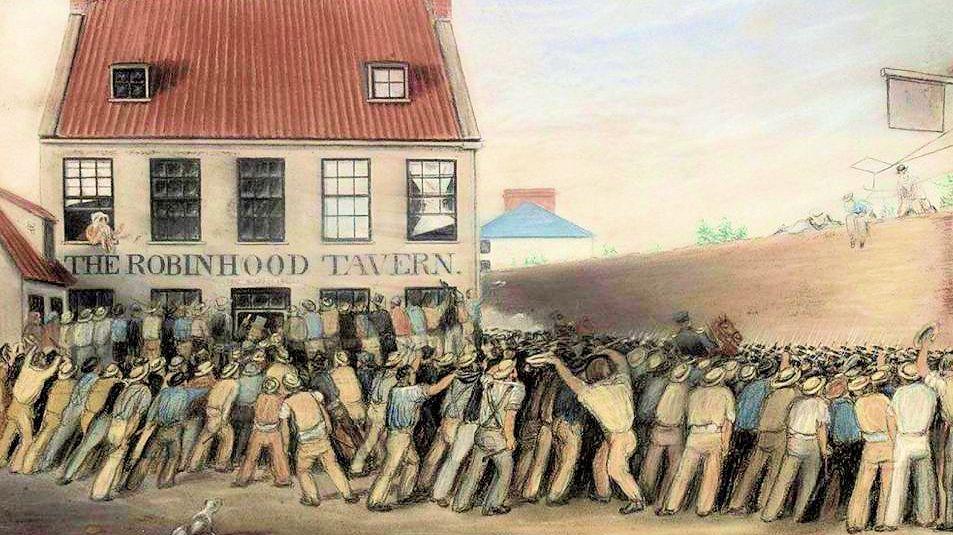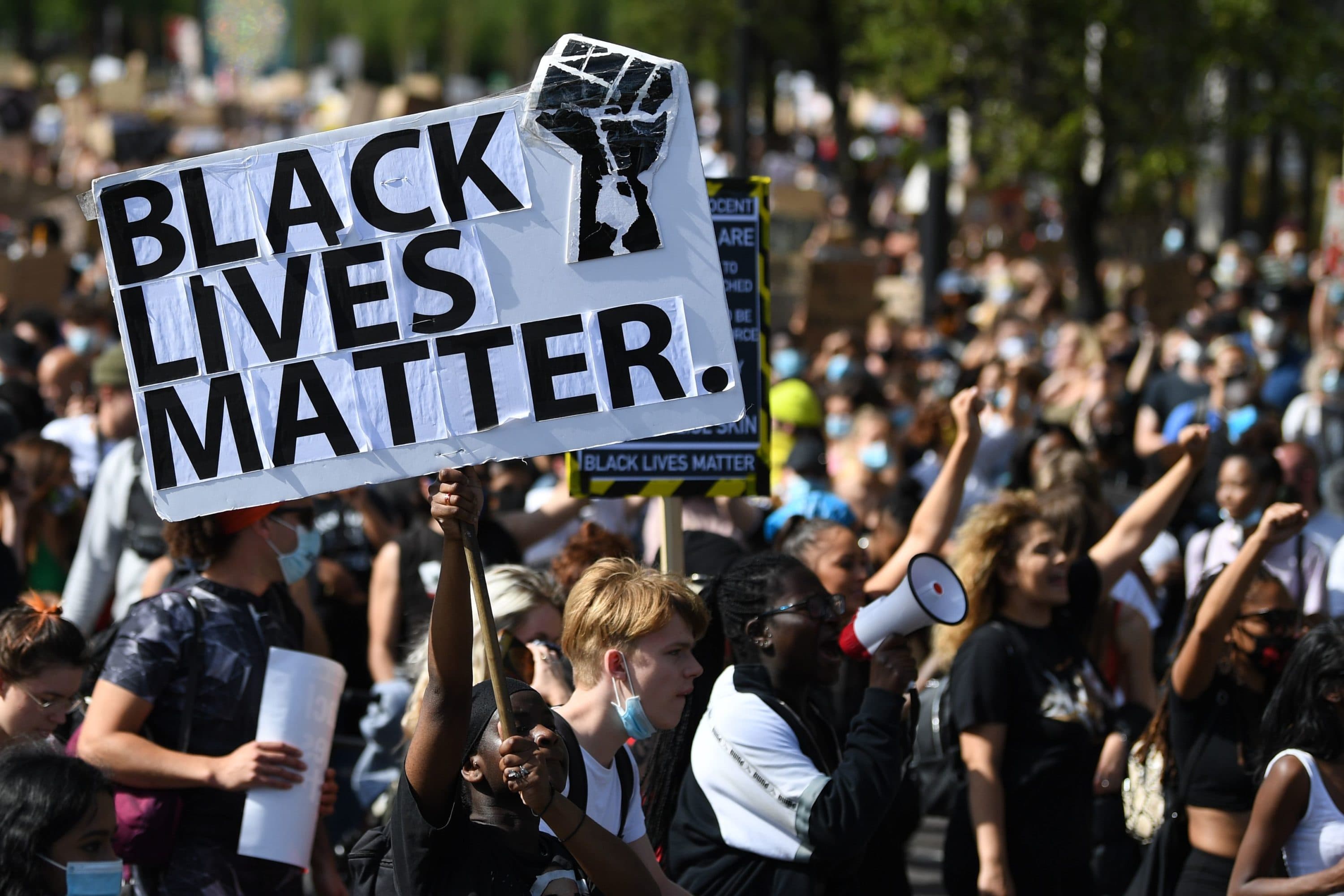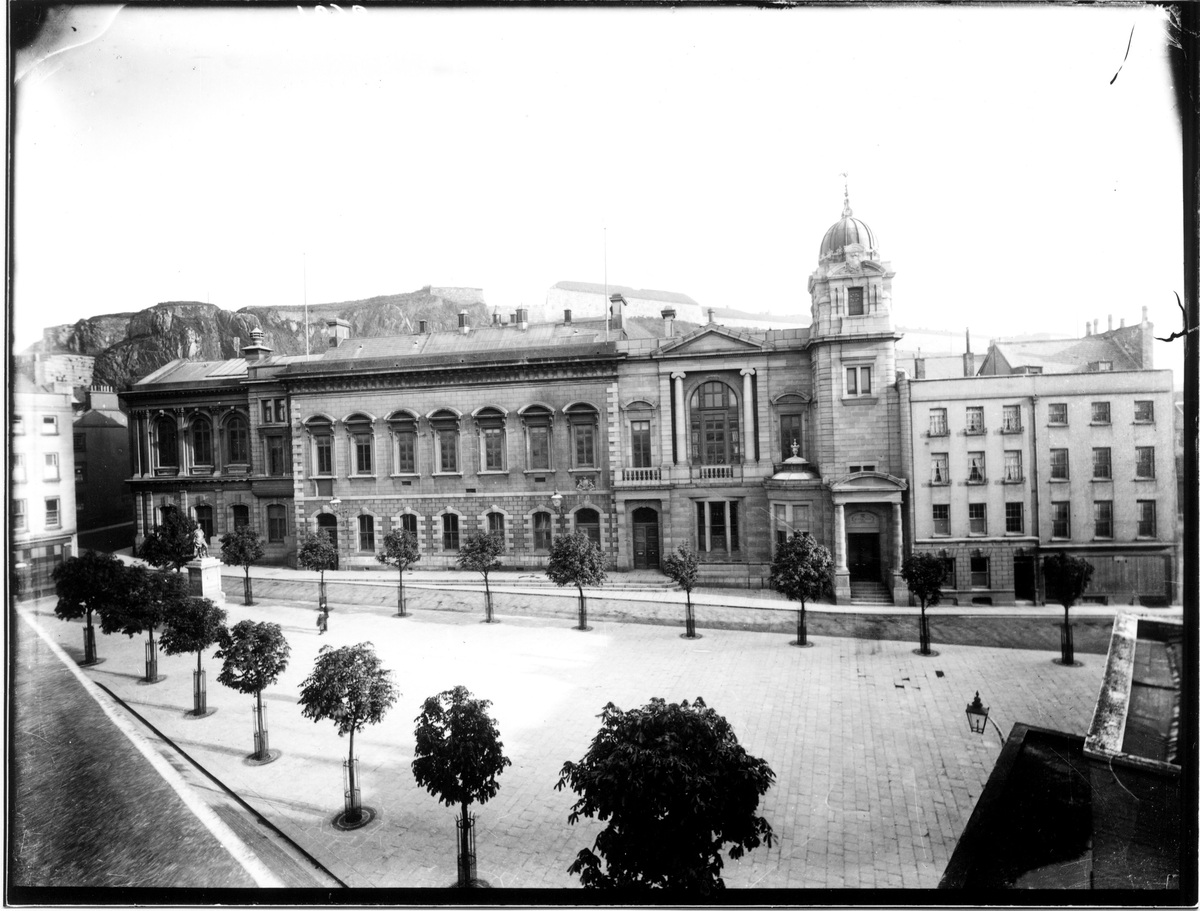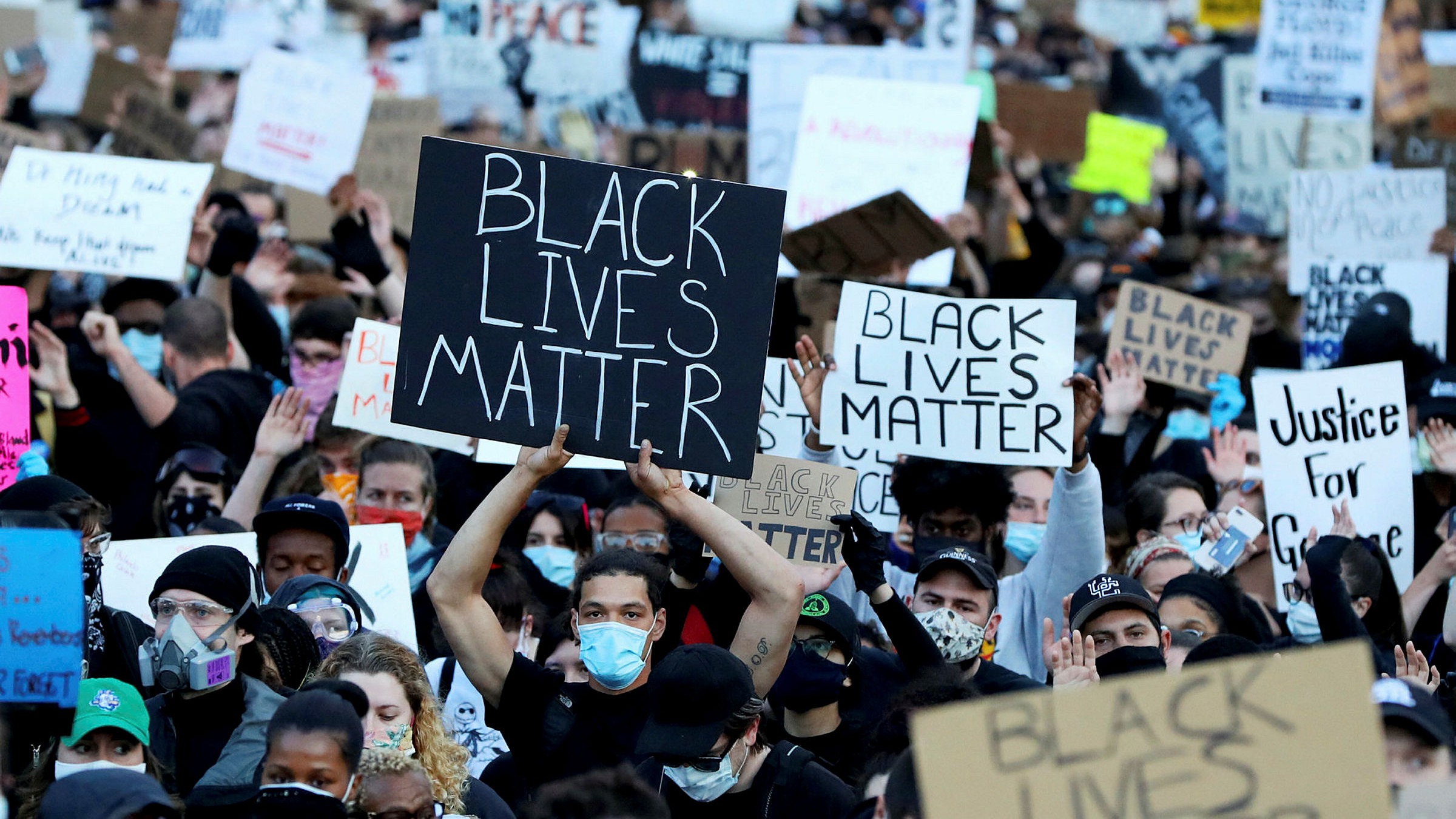The Camera Obscura
A camera obscure is a darkened room with a small hole or lens at one side, through an image is projected onto a wall or table opposite. Camera Obscuras with a lens in the opening have been used since the second half of the 16th century and became popular as help for drawing or painting.

The camera obscura was also used to study eclipses without the risk of damaging the eyes by looking directly at the sun. When it was used as a drawing aid, it helped tracing the projected scene to create a highly accurate picture.
Nicephore Niepce
Nicephore Niepce was a French inventor. He was led to the art of photography by his interest in the new art of Lithography. However he lacked the artistic ability for these. Letters to his sister-in-law around 1816 indicate that he had managed to capture small camera images on paper using silver chloride, with him apparently the first to have any success at all in such an attempt, but the results were negatives, dark where they should be light and vice versa, and he could find no way to stop them from darkening all over when brought into the light for viewing.
Niepce used a coating of bitumen of Judea to make the first permanent camera photographs. The bitumen was hardened where it was exposed to light and the unhardened portion was then removed with a solvent. A camera exposure lasting for hours or days was required. Niépce and Daguerre later refined this process, but unacceptably long exposures were still needed.

Louis Daguerre

Daguerre experimented for years with increasing the sharpness of the lens in the camera obscura and working at discovering the reaction of various light-sensitive materials when applied to different surfaces. With Nicephore Niepce, who was engaged in similar efforts, he worked on this. They worked at permanently capturing the images they saw in the camera obscura, and critiqued each other’s work with each attempt. It was essential that they prepare a medium to be sensitive to light, using a lens and light to form an image upon it, but then making that same medium insensitive to further exposure so that the resulting image could be viewed in light without harming it. When Niepce passed away in 1833, and Daguerre continued some correspondence with his son, Isidore.
Daguerreotypes
By 1835, word got around Paris that the city’s favourite master of illusion and light had discovered a new way to enchant the eye. In January of 1839, the invention of a photographic system that would fix the image caught in the camera obscura was formally announced in the London periodical The Athenaeum.
Louis Daguerre called his invention “daguerreotype.” His method, which he disclosed to the public late in the summer of 1839, consisted of treating silver-plated copper sheets with iodine to make them sensitive to light, then exposing them in a camera and “developing” the images with warm mercury vapor. The fumes from the mercury vapor combined with the silver to produce an image. The plate was washed with a saline solution to prevent further exposure.

Daguerreotypes offered clarity and a sense of realism that no other painting had been able to capture before. By mid-1850’s, millions of daguerreotypes had been made to document almost every aspect of life and death.
Henry Fox Talbot
Shortly after the invention of the daguerrotype was announced in 1839, Talbot asserted priority of invention based on experiments he had began in 1834. At a meeting of the Royal Institution on 25 January 1839, Talbot exhibited several paper photographs he had made. These showed his ways of chemically stabilising his results, making them insensitive to further exposure that direct sunlight could be used to imprint the negative image produced into the camera, onto another sheet of salted paper – creating a positive.

The calotype, was then introduced in 1841 – it used paper coated with silver oxide. The calotype process produced a translucent original negative image from which multiple positives could be made by simple contact printing. This gave it an important advantage over the daguerreotype process, which produced an opaque original positive that could be duplicated only by copying it with a camera.
Richard Maddox

Long before his discovery of the dry gelatin photographic emulsion, Maddox was prominent in what was called photomicrography – photographing minute organisms under the microscope. The eminent photomicrographer of the day, Lionel S. Beale, included as a frontispiece images made by Maddox in his manual ‘How to work with the Microscope’.
The Gelatin or Dry Plate photographic process was invented in 1871 by Maddox: This involved the coating of glass photographic plates with a light sensitive gelatin emulsion and allowing them to dry prior to use. This made for a much more practical process than the wet plate process as the plate could be transported, exposed and then processed at a later date rather than having to coat, expose and process the plate in one sitting. The gelatin dry plate process technique was developed and eventually led to the roll film process.
George Eastman

In 1884, Eastman patented the first film in roll form to prove practical and useful. He had been experimenting at home to develop it. In 1888, he developed the Kodak camera (“Kodak” being a word Eastman created), which was the first camera designed to use roll film. He coined the advertising slogan, “You press the button, we do the rest” which quickly became popular among customers. In 1889 he first offered film stock, and by 1896 became the leading supplier of film stock internationally. He incorporated his company under the name Eastman Kodak, in 1892. As film stock became standardized, Eastman continued to lead in innovations. Refinements in colored film stock continued after his death.
Kodak Brownie

The Kodak Brownie was a series of cameras made by Eastman. They were introduced in 1900 – it was a basic cardboard box camera with a simple meniscus lens that took 2 and 1/4 square pictures on a 117 roll film. It was made and marketed for Kodak roll films, and because of its simple controls and initial price of 1$ (31$ in today’s money.) it became very popular.
Film and Print photography
Print photography is the practice of utilising chemically sensitive paper that’s exposed to a negative, a transparency or a digital image from a printer or similar device. Alternatively, the negative or transparency may be placed on top of the paper and directly exposed which creates a contact print. Digital photos, however are printed commonly on pain paper, for example by a colour printer.
Film photography is a type of photography that uses chemical processes too capture an image, typically on paper, film or a hard plate. These analog processes were the only methods available to photographers for more than a century prior to the invention of digital photography.
Digital Photography
Digital photography uses cameras containing arrays of electronic photodetectors to produce images focused by a lens, as opposed to ask exposure on film. The images captured are digitised and stored as a computer file ready for further digital processing, viewing, electronic publishing or digital printing,



